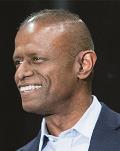by
Ash Noah, CPA, CGMA
| Aug 01, 2018
For businesses today, change is not an option. Customer expectations, the fast pace of innovation and the competitive, complex business environment require organizations to be agile. They need to make decisions and act on them quickly.
Businesses ought to turn to the finance function to create and enable this agility, as finance, from its vantage point, is best positioned to advise on the decisions that will help drive business strategy. Leveraging the concept of “agile finance” is how organizations can best empower strategic execution in order to create value in the digital age.
As you would expect, deploying technology plays a big role here. The robotic revolution has made many business processes faster, more accurate and less costly. Businesses have gained significant efficiencies through technologies such as AI and machine learning, which are progressing rapidly and form the foundations of agility. In fact, a recent study conducted by the American Institute of CPAs (AICPA) and Oracle found that agile organizations all shared the same main characteristics, including:
- Use of new technologies including AI, cloud and Big Data analytics
- Integrated, cross-functional teams
- Finance professionals with highly developed new skills
Technology is often the first port of call for many organizations in their quest to become more agile. However, if you don’t have the right people with the right skill sets to leverage the technology, you will not achieve maximum ROI on your tech investment. In an organization’s quest to become agile, it cannot ignore the human dimension.
People Create Agility, Not Machines
Machines can accomplish many tasks. They’re able to analyze copious amounts of data in a short time period, and based on rules and hypotheses, create multiple scenarios and outcomes. What computers cannot do is make a judgement call on those outcomes. It takes people, with the right business skills, to evaluate the options and recommend a course of action.
For example, say you’re considering launching a new product line. Sophisticated algorithms can very quickly crunch all the market, consumer and economic data, and provide multiple scenarios for market penetration and product demand. However, reviewing those scenarios and making the go or no-go decision ultimately calls for skills that are beyond machine intelligence. Communicating the business imperatives and the risks and opportunities to the stakeholders requires a very specific set of competencies, that include business partnering, leadership and influencing skills as reflected in the CGMA Program.
The AICPA/Oracle research illustrated the importance of these skills - all of the organizations that were shown to be agile had not only adopted new technologies, but their finance teams had developed new skill sets as well, including:
- Big data and analytics expertise
- Data visualization skills
- Financial planning and analysis skills
- Business acumen, business partnering and commercial awareness
- Influencing skills
Agile finance leaders were also about 60% more likely than non-agile leaders to rate the skill levels of their teams as “excellent,” particularly when it came to less traditional finance skills like data visualization, big data and influencing skills.
It is the combination of technology and the right people coming together that enables organizations to be agile. You need them both. However, one out of every three CEOs feels their CFO is not up to the challenge, according to a survey by KPMG – with thirty percent of global CEOs saying their CFOs don’t understand or assist them enough with the challenges they face with running their organizations.
As organizations move toward greater automation to advance their agility, they also need to think about their teams, and the skills they need to develop so they’re ready for the finance function of the future. For some tips on how to do that, check out my article on how to build an effective talent development program at www.wscpa.org/talent-development.
 Ash Noah, CPA, CGMA, is VP of CGMA External Relations at AICPA. You can reach him at Ash.Noah@aicpa-cima.com
Ash Noah, CPA, CGMA, is VP of CGMA External Relations at AICPA. You can reach him at Ash.Noah@aicpa-cima.com
This article appeared in the summer 2018 issue of the WashingtonCPA Magazine. Read more here.
Originally published by American City Business Journals. Reprinted with permission.